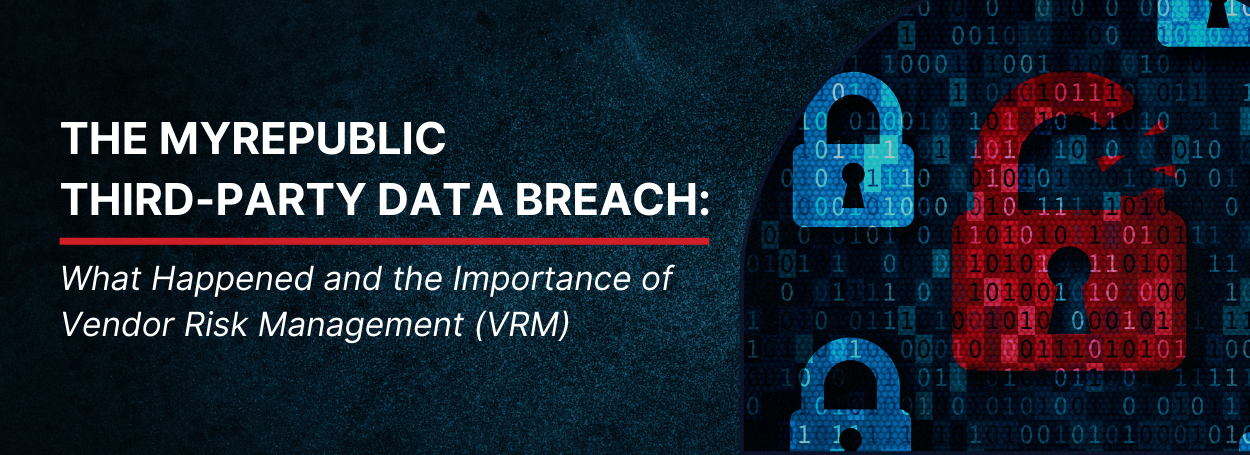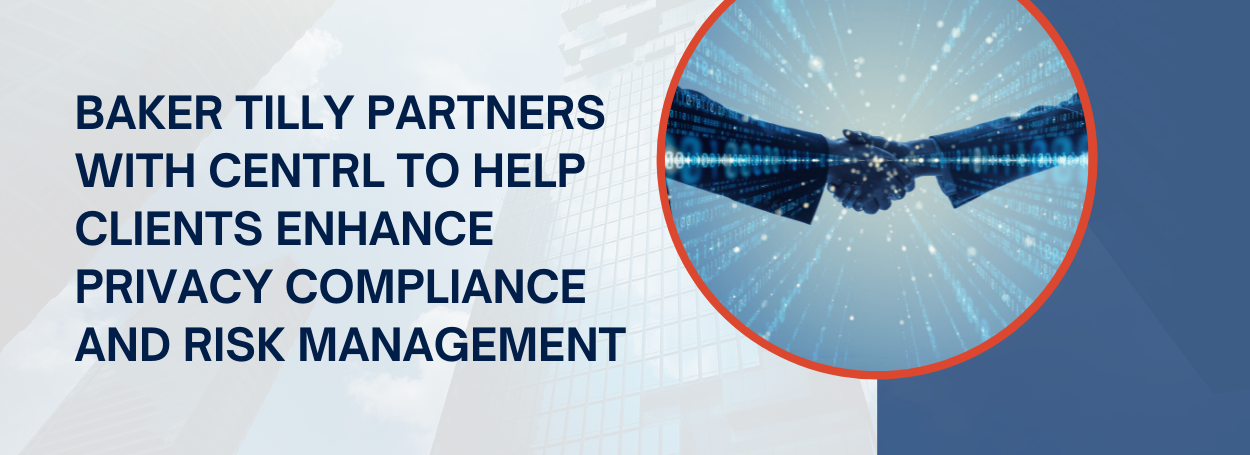The MyRepublic Third-Party Data Breach: What Happened and the Importance of Vendor Risk Management (VRM)

Collaboration is the key to success for any organization. Working with third-party vendors improves business profitability in many ways. For example, it helps cut down costs by preventing you from building your own data storage platform or accounting software. Also, your vendors help you produce better products and services, boost your efficiency, and keep you competitive.
But all of these benefits come at a cost - risks emanating from your third-parties having weak cybersecurity defenses. Remember that even a minor security loophole in one of your vendors could be disastrous for your organization and the entire supply chain ecosystem.
Case in Point: MyRepublic Data Breach
Singapore-based telecommunication and internet service provider MyRepublic recently announced that it has experienced a cybersecurity breach whereby malicious actors got access to its customers’ data stored on a third-party platform. The breach happened on Aug. 29, 2021, the company said.
MyRepublic further said that it has taken mitigatory measures to prevent further unauthorized access to the data storage facility and has contained the attack. The flaw in the company’s third-party data storage platform paved the way for the breach of the data of 79,388 of its mobile subscribers in Singapore.
The breached data included scanned copies of national identity cards of Singaporeans and residential address documents of foreigners. It also had the names and mobile numbers of customers with ported mobile services.
Meanwhile, MyRepublic has tasked its incident response team that includes outside experts like KPMG to work with the company’s IT department to resolve the incident.
As MyRepublic investigates the data breach, it is not clear whether the incident resulted in the breach of the personal or payment information of the company’s customers. The company says the incident didn’t affect their services or business continuity.
The telecom company has reported the incident to regulatory authorities, including the Personal Data Protection Commission and the Infocomm Media Development Authority.
However, MyRepublic has declined to share more details like what third-party service they used for data storage. The company also didn’t clarify whether it was the only client of the data storage service that got affected by the breach.
The incident is the most recent example of how most organizations rely on third-party vendors and give them access to critical data. In most cases, organizations have no idea how their vendors handle, use, and secure their data. This incident should serve as a wake-up call for more clarity and accountability so that customers can understand the level of their data risk exposure.
Post-Breach Response vs. Pre-Breach Measures
It is worth noting that 51 percent of organizations have experienced data breaches originating from malicious actors exploiting flaws in the supply chain infrastructure. Some companies that made headlines for third-party vendor breaches include Volkswagen, Click Studios, Accellion, Cancer Centers of Southwest Oklahoma, Kaseya, and Audi.
The primary reason for the rise in third-party data breaches like the MyRepublic incident is that most companies are so obsessed with the post-breach response and crisis management that they forget about pre-breach security measures. While post-breach management is essential, pre-breach risk management and strengthening vendor security are crucial to preventing or reducing the extent of attack in the first place.
Decision-makers must ensure their organizations have robust vendor risk management programs and frameworks in place to cope with the fast-evolving and sophisticated risks. In addition, your company needs a modern third-party risk management platform to aggregate vendor data, automate risk assessments, and get complete visibility into your supply chain and control over your vendor risk management process.
Vendor risk management requires testaments to manifest your company uses robust risk management practices and advanced technologies to secure customer data like personal and financial information. If your organization uses third-party vendors for data storage, you have to hold the data storage vendor accountable through solid contractual agreements.
Remember that at the end of the day, business continuity, regulatory compliance, prevention of litigations, and business profitability are more important for your company than the investment required to keep the breaches from happening in the first place.
How an Advanced Vendor Risk Management Platform Can Prevent Data Breaches
The MyRepublic incident indicates the significance of assessing third-party vendors who will get access to your critical data. A comprehensive vendor security vetting process is mandatory for onboarding vendors that will get access to important data. It is also vital to continuously monitor the security measures of your third parties to ensure they’re following the industry’s best cybersecurity practices.
Legacy vendor risk assessment and management practices like using Microsoft Excel can no longer protect your organization from the fast-evolving vendor risk landscape. Your company needs a modern and advanced platform explicitly designed for vendor risk management.
The next-generation VRM platforms are created to identify and cope with even the most sophisticated third-party risks. Unlike MS Excel, they have zero or meager error rates, besides having huge data capacity. On top of that, these systems are user-friendly; you can manage all of your vendors from a single dashboard with better UX and UI elements.
And the best part is that the modern VRM solutions are highly intelligent and powerful, thanks to the integration of next-generation technologies like artificial intelligence, simulation features, and automation. And finally, VRM softwares are scalable, meaning you can adapt them to your changing needs, requirements, and business growth.
To summarize, here’re the features and benefits to look for in a robust and reliable VRM software:
- Risk assessment, audit, and monitoring automation
- Vendor review, selection, and onboarding management
- Centralized vendor directory - manage all of your vendors from a single dashboard
- Robust but user-friendly incident-response application for your vendors
- Vendor response evaluation features
- Problem identification and remediation
- Analytics to get valuable and actionable insights into your vendors and monitor risks
Get Vendor360 by CENTRL
Vendor360 is an advanced VRM platform by CENTRL that is powered by next-gen technologies. Using this platform, you can automate vendor risk assessment, monitoring, and auditing and get full control over your third-party risk management process.
Learn more about Vendor360 or schedule a LIVE Demo.

